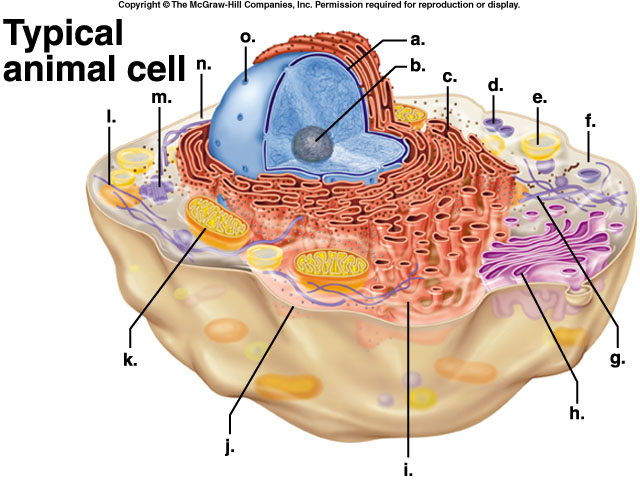1. Identify the cell parts indicated in the diagram below, and describe the functions of each.
 <a onClick="window.open('/olcweb/cgi/pluginpop.cgi?it=jpg:: ::/sites/dl/free/0070271348/27397/ta3_1.jpg','popWin', 'width=NaN,height=NaN,resizable,scrollbars');" href="#"><img valign="absmiddle" height="16" width="16" border="0" src="/olcweb/styles/shared/linkicons/image.gif"> (87.0K)</a> <a onClick="window.open('/olcweb/cgi/pluginpop.cgi?it=jpg:: ::/sites/dl/free/0070271348/27397/ta3_1.jpg','popWin', 'width=NaN,height=NaN,resizable,scrollbars');" href="#"><img valign="absmiddle" height="16" width="16" border="0" src="/olcweb/styles/shared/linkicons/image.gif"> (87.0K)</a>
2. Until very recently, life scientists thought that there were only two types of cells. How has that view changed?3. As a cube increases in size from 3 centimeters to 5 centimeters to 7 centimeters on a side, how does the surface area to volume ratio change? 4. Name three structures or activities found in eukaryotic cells but not in bacteria or archaea. 5. Cite two types of evidence in support of the endosymbiont theory. Click Here For The Answers Additional Questions1. Describe the structures and functions of each of the following organelles: a. nucleus b. ribosome c. lysosome d. smooth ER e. rough ER f. chloroplast g. mitochondrion h. peroxisome i. Golgi apparatus 2. Describe the events of secretion. Click Here For The Answers | 


 2002 McGraw-Hill Higher Education
2002 McGraw-Hill Higher Education

 2002 McGraw-Hill Higher Education
2002 McGraw-Hill Higher Education